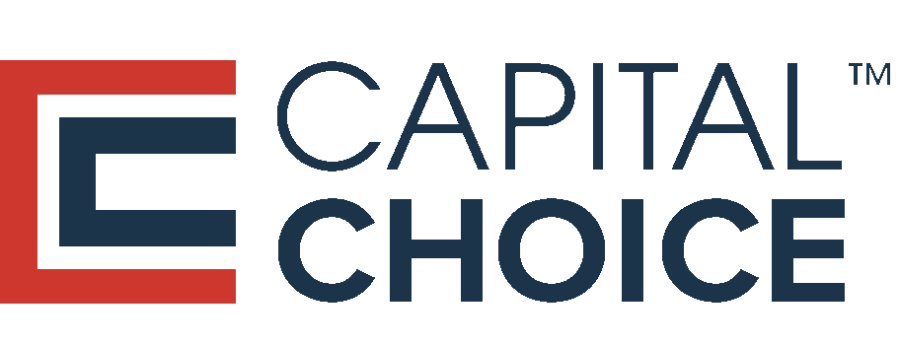Hello there, my friend! If you’re in your 40s or 50s and have clicked on this article, chances are you’re starting to think seriously about retirement. And if you’re anything like me, that thought might be accompanied by a little frisson of panic. “Have I saved enough?” “Will I be able to maintain my current lifestyle?” “What if I outlive my savings?” If these questions are keeping you up at night, you’re not alone.
But here’s the good news – it’s never too late to start saving for your retirement. Yes, you heard me right. Whether you’ve been diligently stashing away money since your first job, or you’ve just realized that retirement isn’t as far off as it once seemed, there’s always room to boost your savings.
I remember back when I was in my early 30s, the idea of retirement seemed so distant, so nebulous, that I barely gave it a second thought. Fast forward a just a little over a decade, and here I am, a seasoned financial advisor, telling you that it’s high time we take control of our financial futures.
So, pull up a chair, grab your favorite beverage, and let’s dive into some proven strategies to bolster that nest egg as you approach your golden years. Trust me, your future self will thank you!
I. Understanding the Current Financial Situation
Alright, let’s get real for a moment. To plan for the future, we first need to understand where we stand today. It’s like using a GPS – you can’t get directions to your destination if you don’t know your starting point. So, the first step to boost your savings is to take a good, hard look at your current financial situation.
Start by calculating your net worth. Don’t worry, it’s not as daunting as it sounds. It’s simply a matter of subtracting your debts (think mortgages, car loans, credit card debt) from your assets (your home, investments, savings accounts, and heck, even that vintage comic book collection that’s been gathering dust in the attic).
When I first did this exercise, I was surprised to find out how much my daily latte habit was eating into my savings. I realized that I could save a significant amount by brewing my own coffee at home. It was a small lifestyle change, but its impact on my savings was substantial.
Understanding your net worth gives you a clear picture of where you stand financially. You might find that you’re doing better than you thought, or you might realize that you need to step up your savings game. Either way, knowledge is power, and in this case, it’s the power to plan for a comfortable retirement.
Remember, there’s no judgment here. Whether your net worth is in the positives or negatives, it’s just a starting point. The goal is to improve from where you are, and trust me, with a little effort and the right strategies, you definitely can!
II. Setting Realistic Retirement Goals
Now that we’ve got a grasp on our current financial situation, it’s time to gaze into the crystal ball and start setting some retirement goals. I know, I know, predicting the future is tough – if I could do it accurately, I’d be spending my time picking lottery numbers, not writing blog posts!
But in all seriousness, setting realistic and achievable goals for your retirement is crucial. Think about what kind of lifestyle you want to lead. Do you see yourself living in a beach house, sipping drinks as the sun sets? Or perhaps you’re after a cozy cabin in the woods, surrounded by nature? Whatever your dream retirement looks like, put a price tag on it.
Consider factors like healthcare needs and life expectancy too. Medical science is quite remarkable, and I’m sure you’ve noticed that people are not only living longer, but they are having more energy to do the things they wanted to do in their retirements. It’s possible that might happen to you, and while having good health is a blessing, but it also means your retirement savings need to grow more and stretch a little further than you might be planning for.
Don’t forget about inflation either. The value of money decreases over time, so what seems like a lot now might not go very far in the future. When I was a kid, a candy bar from the vending machine was just 50 Cents. Today, you’d be hard-pressed to find one for less than a few dollars!
Take your time with this step. It’s okay to adjust your goals as you go along. The important thing is to have a clear vision of your retirement and what it will take to get there. Remember, a goal without a plan is just a wish. So let’s turn those retirement wishes into solid, actionable plans!
III. Maximizing Retirement Accounts
Alright, we’re making great progress! Now that we’ve done the groundwork of understanding our current financial situation and setting retirement goals, it’s time to explore one of the most effective ways to boost your savings – maximizing your retirement accounts.
If you’re not already contributing to a retirement account, let me tell you, you’re missing out on a golden opportunity. Retirement accounts like 401(k)s or IRAs offer tax advantages that can significantly accelerate your savings growth.
If your employer offers a 401(k) plan, especially if they match contributions (free money, anyone?), make sure you’re contributing as much as possible. When I left the military and got my first civilian job, I started my 401(k) contributions at the company match, and then each year I raised that percentage a small amount. Yes, it meant tightening my belt a little, but seeing my savings grow was well worth it.
If you’re over 50, you can also take advantage of catch-up contributions. This is a provision that allows folks nearing retirement to contribute more to their retirement accounts than the standard limit. It’s like a turbo boost for your savings!
And don’t forget about Individual Retirement Accounts (IRAs). Whether it’s a Traditional or Roth IRA, these accounts offer additional opportunities to save for retirement with tax benefits.
Remember, the key here is consistency. Regular, disciplined contributions to your retirement accounts can make a huge difference in the long run. I like to think of it as planting a seed – with time, patience, and regular watering (or in this case, contributions), that seed will grow into a mighty retirement savings tree!
IV. Diversifying Investment Portfolio
Moving onto our next strategy – diversifying your investment portfolio. As the old saying goes, “Don’t put all your eggs in one basket.” This piece of wisdom holds especially true when it comes to investing for retirement.
Diversification is essentially spreading your investments across a variety of assets such as stocks, bonds, real estate, and even commodities. The aim is to reduce risk. If one investment doesn’t perform well, others might do better, balancing out the overall performance of your portfolio.
Start by examining your current investment portfolio. Is it heavily skewed towards one type of asset? Perhaps you’ve invested predominantly in tech stocks or real estate. While these might have given good returns in the past, they also expose you to higher risk if that particular sector takes a hit.
Consider broadening your horizons by investing in a mix of domestic and international stocks, bonds, and other assets. Mutual funds and exchange-traded funds (ETFs) can be a great way to achieve this diversification without having to buy each security individually.
Another aspect of diversification is considering your age and risk tolerance. As you get closer to retirement, it might be wise to shift some of your investments from riskier assets like stocks to more stable ones like bonds.
Remember, diversification isn’t just about maximizing returns; it’s about managing risks. A well-diversified portfolio can provide you with the peace of mind that your retirement savings are well-protected, no matter what the market does.
V. Minimizing or Eliminating Debt
As we continue our journey towards a secure retirement, let’s discuss a critical aspect that often gets overlooked – striving to become debt free. When it comes to preparing for retirement, reducing or eliminating your debt load is just as important as building your savings.
Why, you ask? Well, debt can eat into your retirement savings like a caterpillar on a leaf. The money you pay towards interest is money that could otherwise be growing in your retirement account.
Start by taking stock of all your current debts – credit cards, mortgages, student loans, car loans, anything that you owe. Rank them in order of their interest rates. Generally, it makes sense to pay off the ones with the highest interest rates first, as they cost you the most.
Lastly, avoid taking on new debt. It might be tempting to splurge on a new car or a dream vacation, but remember, every dollar you borrow now is a dollar (plus interest!) you’ll have to pay back later.
Eliminating debt might not be the most glamorous part of retirement planning, but trust me, your future self will thank you!
VI. Considering a Later Retirement
Let’s explore another strategy – considering a later retirement. Now, I know this might not be what you want to hear. After all, who doesn’t dream of retiring early and enjoying a life of leisure? However, working a few extra years can have a significant impact on your retirement readiness.
Firstly, working longer means more time to contribute to your retirement accounts. Those additional contributions, combined with the power of compound interest, can boost your savings significantly.
Secondly, delaying retirement can increase your Social Security benefits. The longer you wait to start drawing Social Security (up to age 70), the higher your monthly benefit will be. This is particularly important as these benefits can serve as a reliable source of income throughout your retirement.
Working longer can also help you stay mentally and physically active. Many people find that their work gives them a sense of purpose and keeps them engaged. Of course, this doesn’t mean you have to stick to a stressful full-time job. You could consider transitioning to part-time work or even starting a second career in a field you’re passionate about.
I understand that pushing back your retirement date might not be the most appealing option, but it’s worth considering. Sometimes, working a few extra years can make the difference between just getting by in retirement and truly thriving.
VII. Downsizing and Lifestyle Adjustments
Another important consideration to make with regards to retirement planning: downsizing and lifestyle adjustments. This may not be the most exciting topic, but it is a practical and often necessary step towards achieving financial stability in retirement.
Downsizing essentially means reducing your living costs to fit within a smaller budget. This could involve moving to a smaller home or even relocating to an area with a lower cost of living. While such a move can be emotionally challenging, it can also free up a significant amount of equity from your home, which can be redirected into your retirement savings.
But downsizing isn’t just about your home. It’s about re-evaluating your entire lifestyle and making changes where necessary. This could mean trading in your gas-guzzling SUV for a more fuel-efficient car, cutting back on dining out, or cancelling subscriptions you rarely use.
It’s also worth noting that downsizing doesn’t necessarily mean sacrificing your quality of life. For many people, a simpler lifestyle can lead to less stress and more happiness. It’s all about identifying what truly matters to you and letting go of the rest.
Another aspect to consider is healthcare costs, which tend to rise as we age. Planning for these expenses is crucial. This may involve investing in a supplemental health insurance plan or setting aside funds specifically for medical costs.
In conclusion, while downsizing and making lifestyle adjustments might seem like tough choices, they can significantly improve your financial security in retirement. Remember, the goal isn’t to live a life of austerity, but to make smart decisions that enable you to enjoy your golden years without financial stress.
VIII. Seeking Professional Help
As we reach the conclusion of our guide, let’s discuss an important resource that can greatly benefit your retirement planning – seeking professional help. While it’s entirely possible to plan for retirement on your own, a financial advisor can provide valuable guidance and expertise.
A trustworthy financial advisor can help you set realistic goals, create a comprehensive retirement plan, and guide you through complex financial decisions. They can offer advice on a range of topics, from investment strategies to tax planning to estate planning.
However, remember that not all financial advisors are created equal. It’s crucial to choose one who is reputable, experienced, and has your best interests at heart. Look for advisors who are fiduciaries, meaning they are ethically bound to act in your best interests.
You may also want to consider their fee structure. Some advisors charge a flat fee or an hourly rate, others earn commissions on the products they sell, and some provide a combination of both. Depending on you and your situation might have a major impact on your fees one way or another, but neither have a clear advantage over the other. What’s important is that you take the time to understand their fees upfront to avoid any surprises down the line.
Another important point is to find an advisor with whom you feel comfortable. This person will be guiding you through major financial decisions, so it’s important to have a good rapport and open communication.
In conclusion, while seeking professional help involves its own costs, the right financial advisor can be an invaluable resource in your journey towards a secure retirement. They can provide the expertise and guidance needed to navigate the complex world of retirement planning.
Remember, the goal is to retire with confidence and peace of mind, knowing that you have a solid plan in place for your financial future.
Conclusion
We’ve now reached the end of our comprehensive guide to retirement planning. Throughout this journey, we’ve covered a wide range of topics, from understanding the basics of retirement savings to considering a later retirement, downsizing, lifestyle adjustments, and seeking professional help.
Remember, retirement planning is not a one-size-fits-all process. Everyone’s situation is unique, with different financial circumstances, goals, and timelines. What’s important is that you take the time to understand your own needs and make informed decisions.
It’s also crucial to start planning as early as possible. The sooner you begin, the more time you’ll have to grow your savings and adjust your plans as needed. Even if you feel like you’re starting late, remember that it’s never too late to make a difference.
While retirement planning can seem daunting, it’s a critical step towards securing a comfortable and fulfilling future. With careful planning, disciplined saving, and wise investing, you can build a nest egg that will support you through your golden years.
Finally, don’t hesitate to seek professional guidance if you need it. A trusted financial advisor can provide invaluable expertise and peace of mind.
As we conclude, remember that the journey to retirement is just as important as the destination. So take a deep breath, stay committed to your goals, and know that every step you take brings you closer to a successful retirement.



